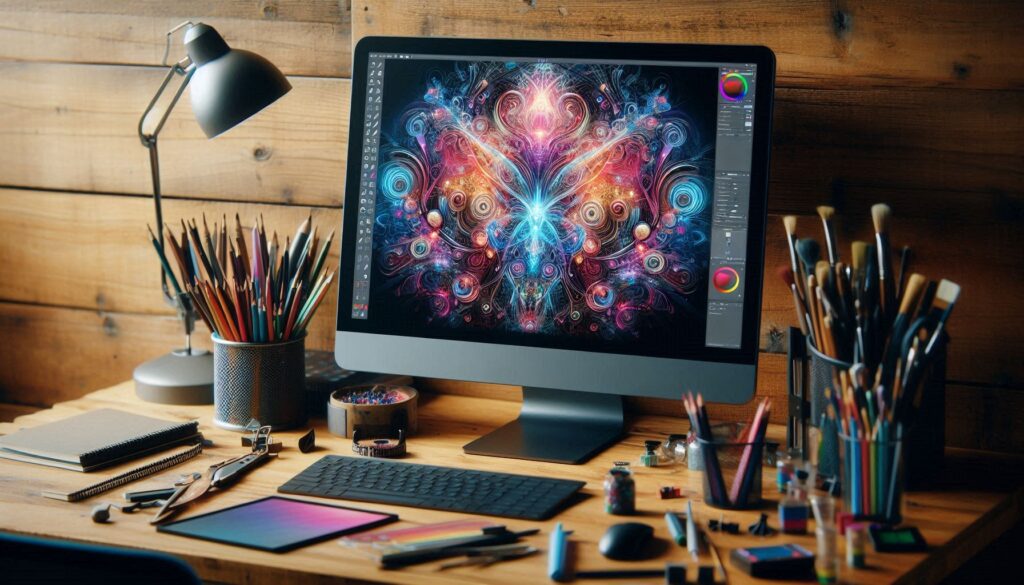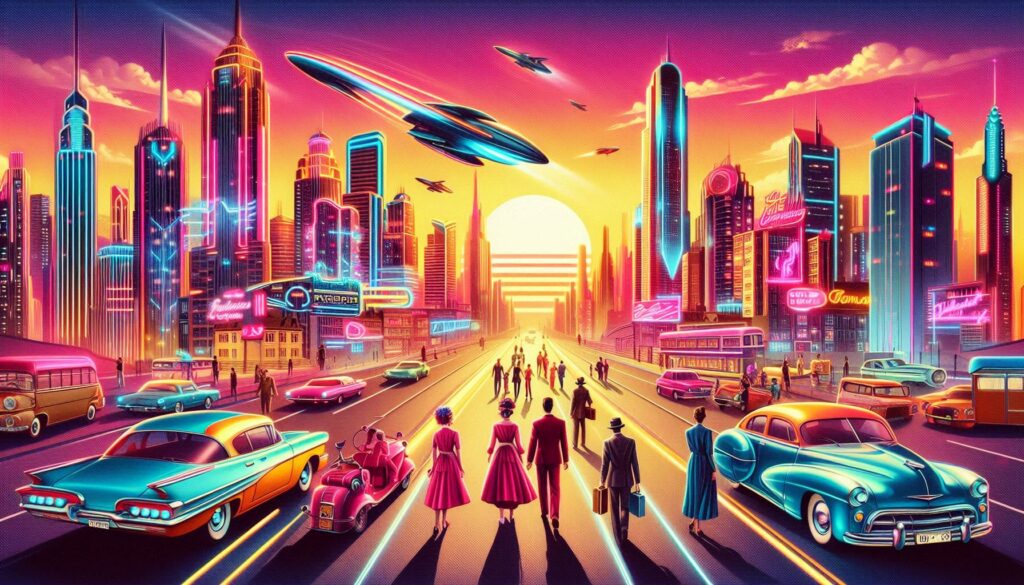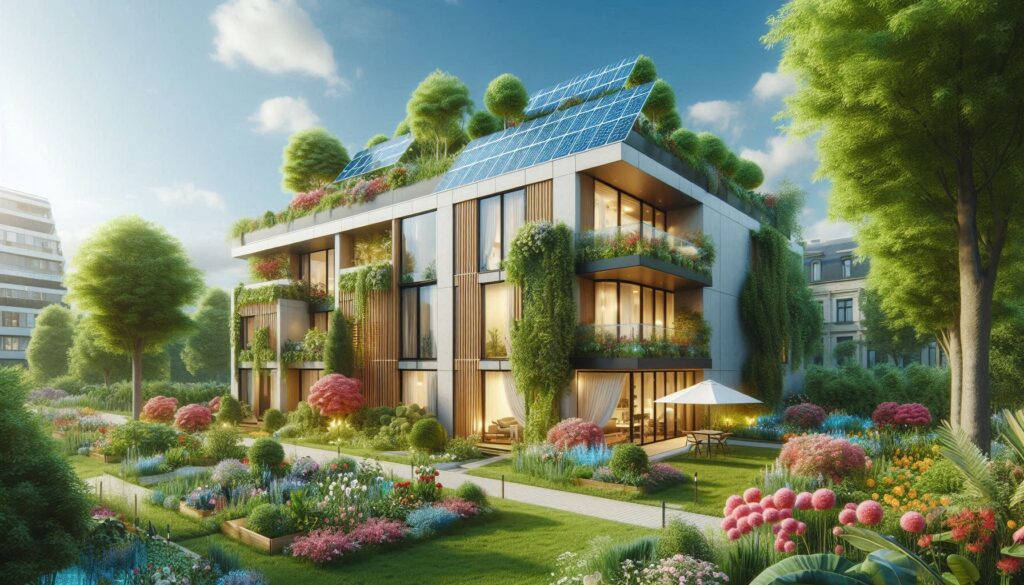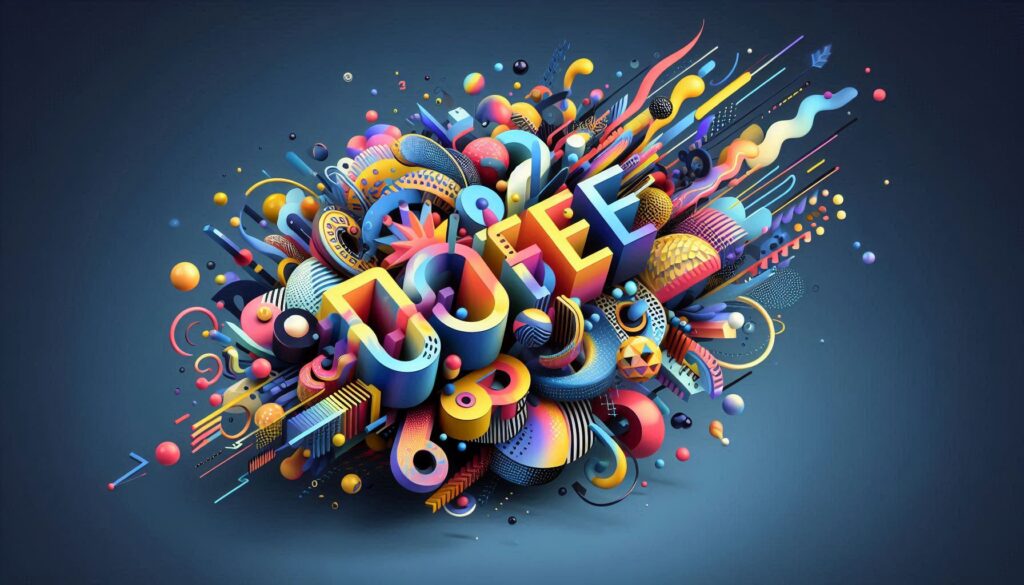Design is evolving rapidly, influenced by technological advancements, cultural shifts, and a growing emphasis on sustainability. As we navigate through 2024, several design trends are shaping the landscape across digital, graphic, interior, and product design. Here are the top trends defining the year:




1. AI-Generated and Assisted Design
Origin
The rise of AI-generated design can be traced back to the development of machine learning algorithms that began experimenting with visual creativity in the early 2010s. With advancements in deep learning, neural networks like OpenAI’s DALL·E, MidJourney, and Adobe Firefly have made AI-driven design more accessible to professionals and enthusiasts alike.
Pros:
- Speed & Efficiency: AI can generate multiple design variations in seconds, significantly reducing production time.
- Enhanced Creativity: AI provides designers with unexpected ideas and unique compositions that they may not have considered.
- Personalization: AI-powered tools can tailor design elements to individual user preferences.
Cons:
- Lack of Human Touch: AI-generated work may lack the nuanced creativity and emotional depth of human designers.
- Ethical Concerns: Issues regarding copyright, originality, and bias in AI datasets remain unresolved.
- Job Displacement: As AI becomes more capable, concerns about replacing human designers persist.
2. Maximalism & Bold Aesthetics
Origin
Maximalism has its roots in various artistic movements, including Baroque, Rococo, and Art Nouveau, which celebrated elaborate decoration and intricate detail. In contrast to the minimalist trends of the early 2000s, maximalism has resurged as a rebellion against uniformity and digital sterility.
Pros:
- Expressiveness: Allows designers to create highly individualized and attention-grabbing works.
- Diversity in Design: Incorporates various styles, textures, and color palettes.
- Emotional Impact: Can evoke strong emotions and a sense of nostalgia.
Cons:
- Overwhelming Aesthetic: Poor execution can lead to visual clutter and confusion.
- Harder to Maintain: In interior design and branding, maximalist styles can require more effort to keep looking cohesive.
- May Not Suit All Audiences: Some users prefer the simplicity of minimalism for a more calming effect.
3. Sustainable & Eco-Friendly Design
Origin
Eco-conscious design emerged as a response to climate change and resource depletion. It gained momentum in the late 20th century with the rise of sustainable architecture and product design. Today, digital design also incorporates eco-friendly elements, such as low-energy websites and dark mode interfaces.
Pros:
- Environmental Benefits: Reduces waste, carbon footprint, and resource depletion.
- Consumer Appeal: Many consumers prefer brands with sustainable practices.
- Longevity: Durable, high-quality materials tend to last longer.
Cons:
- Higher Costs: Sustainable materials and ethical production processes can be expensive.
- Limited Availability: Some eco-friendly materials are not yet widely accessible.
- Design Constraints: Striking a balance between sustainability and aesthetics can be challenging.
4. 3D and Immersive Experiences
Origin
The rise of 3D design and immersive experiences can be linked to the gaming industry and advancements in AR/VR technology. The late 2010s saw the adoption of 3D elements in web and graphic design, driven by improvements in real-time rendering and WebGL capabilities.
Pros:
- Engaging User Experience: 3D graphics make websites and apps more interactive.
- Brand Differentiation: Helps brands stand out in a competitive digital space.
- Realism & Depth: Provides a more lifelike and immersive visual appeal.
Cons:
- High Processing Demand: Requires advanced hardware and software to function smoothly.
- Slower Load Times: Can affect website performance if not optimized properly.
- Complex Development: Designing and implementing 3D elements requires specialized skills.
5. Retro-Futurism
Origin
Retro-futurism blends past visions of the future with contemporary design. It draws inspiration from 1950s-1980s sci-fi aesthetics, cyberpunk, and vaporwave movements.
Pros:
- Nostalgic Appeal: Evokes familiar themes while maintaining a futuristic twist.
- Unique Aesthetic: Stands out from conventional modern designs.
- Blends Old & New: Merges traditional styles with modern technology.
Cons:
- Can Feel Dated Quickly: Might not have long-term appeal.
- Limited Use Cases: Works well in entertainment and branding but not always in corporate settings.
- Overused Tropes: Some elements can feel clichéd if not innovatively applied.
6. Kinetic Typography
Origin
Kinetic typography has roots in film and television, particularly in the title sequences of movies and commercials. With advancements in digital tools like After Effects, it has become more prevalent in web and social media design.
Pros:
- Dynamic Storytelling: Adds movement and energy to otherwise static text.
- Improved Engagement: Attracts attention and enhances message retention.
- Versatile Applications: Can be used in branding, advertising, and UI/UX design.
Cons:
- Requires Technical Skills: Animation tools can be difficult for beginners.
- Overuse Can Be Distracting: Excessive motion can make content harder to read.
- Compatibility Issues: May not work well on all devices and platforms.
7. Inclusive & Accessible Design
Origin
Accessibility has been an important design principle for decades, but the push for more inclusive design gained momentum with global disability rights movements and regulations like WCAG (Web Content Accessibility Guidelines).
Pros:
- Larger Audience Reach: Improves usability for people with disabilities.
- Legal Compliance: Helps avoid lawsuits related to accessibility laws.
- Better User Experience: A more inclusive approach benefits all users, not just those with disabilities.
Cons:
- Can Increase Costs: Implementing accessibility features requires additional time and resources.
- Limited Customization: Strict accessibility guidelines may restrict design choices.
- Requires Continuous Updates: Needs to be adapted as technology and standards evolve.
8. Handmade & Organic Elements
Origin
Handmade aesthetics have been a countertrend to digital perfectionism. The rise of DIY culture, along with interest in craft-based traditions, has brought more organic textures and hand-drawn elements into mainstream design.
Pros:
- Authenticity: Feels more personal and relatable.
- Unique Look: Avoids generic digital aesthetics.
- Eco-Friendly: Often associated with sustainable and ethical design practices.
Cons:
- Labor-Intensive: Hand-drawn and handcrafted elements require more time.
- May Lack Scalability: Not always practical for large-scale branding.
- Can Appear Messy: If not executed well, it may look unpolished.
The design trends of 2024 reflect a blend of technology, nostalgia, sustainability, and personalization. Understanding the origins, benefits, and limitations of each trend can help designers make informed decisions about which styles to incorporate into their work. Whether embracing AI, maximalism, or sustainable design, staying ahead of these trends will define success in the creative industry this year.